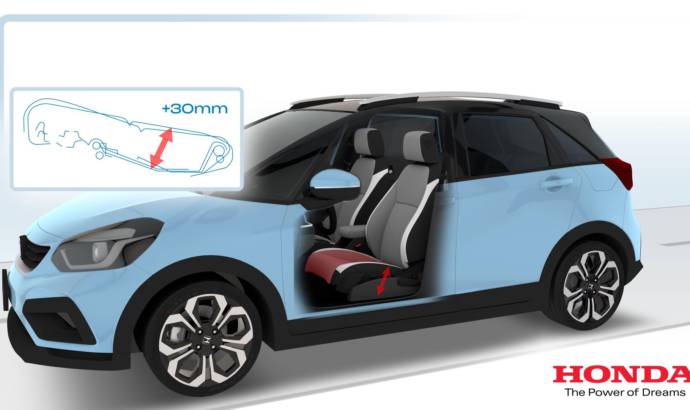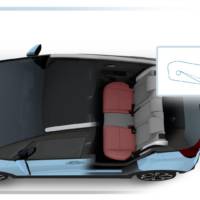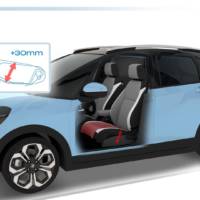Honda wants to be more important in the small car segment with the new generation Jazz. In order to appeal to an increasing number of people, Honda developed the new Jazz with some important innovations.
Central to achieving this is Honda’s newly developed body stabilising seat frame with supportive mat structure. The new front seat mat structure is placed at both the bottom and back of the seat and replaces the S-spring design of previous models. The introduction of a wider seat bottom has allowed the seat pad depth to be increased by 30mm with the additional softness immediately noticeable when seated. This new structure combined with the increased padding allows the cushion to flex moderately but, crucially, to not bottom out.
The enhanced structure in the back of the seat increases lumbar and pelvic support to create a body stabilising effect. This helps to prevent fatigue, particularly in the hip and waist area of occupants on longer journeys. Additionally, the new structure makes it easier to maintain a comfortable and stable driving posture, even when cornering and on uneven road surfaces.
The newly designed seats are tapered towards the top of the seatback to provide the cushion volume needed to fully support and envelop occupants’ backs. This tapering design also provides a wider space between the front seats making it easier for front and rear occupants to communicate. The lowest point of the seat height is 14mm closer to the ground, which, combined with more rounded front corner cushions, makes it easier to enter and exit the car.
Honda’s engineers and designers also worked together to enhance passenger comfort in the rear of the car. By moving the seat hinges outside of the rear seat back frame, the development team were able to address the comfort of the seat pad. The seat frame pipes have been repositioned allowing engineers to increase the padding thickness by 24mm.
Ergonomic enhancements include positioning the brake pedal deeper inside the footwell, reducing the need for the seat position to be adjusted for comfortable pedal operation. The angle of the brake pedal has also changed, allowing for an increase in foot angle of five degrees for a more natural pedal action, w hile the seat has been repositioned accordingly to provide the optimal thigh support.
Setting a comfortable driving position is easier than ever thanks to increased range of steering wheel reach adjustment, bringing the wheel centre up to 14mm closer to the driver. The steering wheel angle is also now two degrees more upright than in the previous model so it’s facing the driver more. As a result of these changes, the amount of arm and shoulder movement required to reach the steering wheel is reduced, improving shoulder-seat separation by 18mm.
Considerations for rear comfort throughout the structural design process ensure that rear passengers also benefit from best-in-class rear leg room of 989mm, with the front seat guiding rails moved further apart and the width between the rails increased. The fuel tank is packaged in the centre of the chassis beneath the front seats – a unique feature in its class – allowing the new Jazz to retain the versatile rear Magic Seats that offer both ‘fold-flat’ or ‘flip-up’ seat flexibility, depending on cargo space required.





